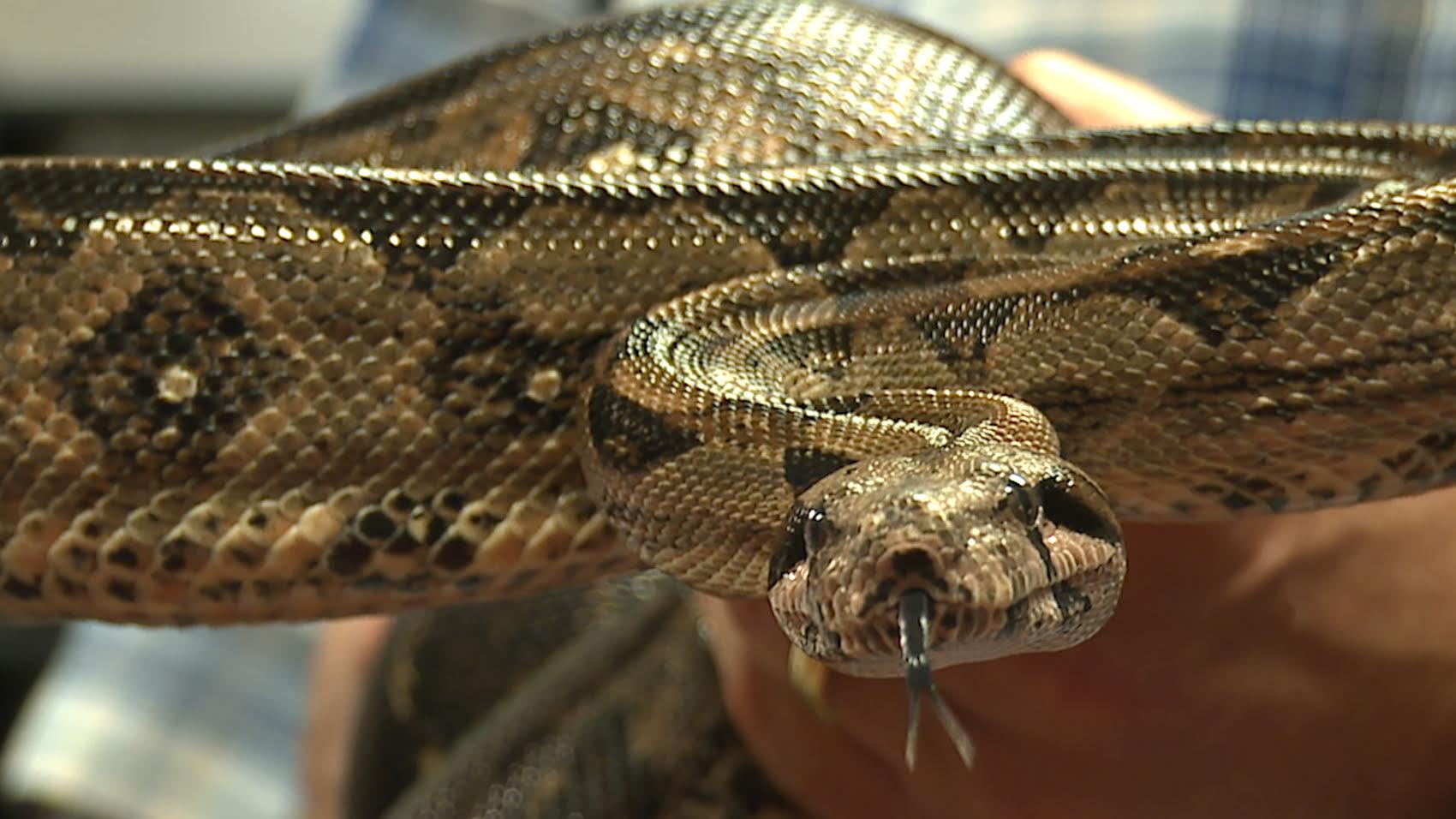
She is the author of My Husband and Other Animals.…
Animals do the most amazing things. Read about them here in this series by Janaki Lenin.

Many, including reptile experts and quiz masters, would say large-bodied pythons and boas suffocate their prey by squeezing hard. Others might say they break the bones of their victims. Everyone got it wrong. No one thought to investigate how these snake giants killed their prey until now.
Scientists from Dickinson College, U.S., tested the vital parameters of rats as they were being constricted by snakes. They discovered the reptiles dispatch their victims with precise efficiency.
Snakes have no limbs or claws to overpower their prey. Some, like cobras and vipers, use venom to kill, while others, like checkered keelback water snakes, swallow frogs alive. But large snakes like pythons and boas need large meals. Swallowing kicking pigs and fighting deer alive would be impossible without getting grievously hurt in the struggle. The only weapon at their disposal is their muscular strength.
Pythons and boa constrictors strike and grab their prey. While six rows of sharp hooked teeth grip the animal firmly, the snake throws two or three loops of its muscular body coils around the victim’s torso like a straitjacket. The coils tighten until the poor animal becomes lifeless. How does squeezing kill the animal?
In 1994, David Hardy Sr., an anaesthesiologist in Arizona who also studies snakes, observed that constrictors killed their quarry quickly. Since suffocation would take a long time, the reptiles ought to be using a more effective strategy. He suggested death came from rapid circulatory or cardiac arrest. This theory remained untested for two long decades.
Scott Boback and his team from Dickinson College examined cardiovascular functions of rats before, during, and after being enveloped by captive boas. They published their findings in a paper called ‘Snake constriction rapidly induces circulatory arrest in rats’ in The Journal of Experimental Biology.
Boback and his team inserted electrodes to monitor electrocardiogram (ECG) of the heart, blood pressure catheters, and other probes into 24 anesthetised rats before offering them to nine boa constrictors. This allowed them to check on the rodents’ vital parameters throughout the constriction process.
“Without a doubt one of the biggest challenges was to fit anesthetized rats with very delicate equipment and secure these in such a way that the snakes would not dislodge them when they struck and constricted the rats,” Boback told The Wire.
Seconds after the snakes wrapped their coils tightly around the rats, the scientists watched with amazement as the blood circulation shut down. With no blood flowing, the brain, liver, and heart were starved of oxygen. The heartbeat became erratic. Had the rats not been anesthetised, they would have quickly lost consciousness. The boas took no longer than eight minutes to kill the rats.

“When we were in the laboratory we could see the individual effects on, say, the arterial [blood] pressure and on the ECG [electrical activity of the heart],” says Boback. “But it wasn’t until we analysed all these together that we realised how many physiological issues were happening at precisely the same time as the snakes were applying (and increasing) their constriction pressure.”
In an earlier study, Boback had demonstrated that boa constrictors keep a check on their prey’s heartbeat as they wrap around the animal’s torso. Once the snakes feel the heartbeat falter and stop, they relax their muscles and swallow their kill.
For the record, the team removed the rats with wires and probes used in the experiment, and fed the snakes with other rats.
Although the scientists studied boa constrictors from Belize, Boback thinks Old World pythons likely kill their prey in a similar manner.
“It’s especially satisfying to read about experimental confirmation of my old friend David Hardy Sr.’s explanation of how constricting snakes kill their prey,” evolutionary biologist Professor Harry Greene, Cornell University, told The Wire. “Dave, trained as an anaesthesiologist, reached this conclusion due to the combination of his knowledge of cardiovascular physiology combined with years of watching his pet boa constrictors kill wild rats. I’m impressed by how much faster the mechanism demonstrated by Boback et al. is than suffocation, a time factor that could be crucially important to a predator engaged in a physical encounter with potentially deadly prey.”
There might be something to the long-standing theory of constrictors breaking their victims’ bones though. In 2004, anaconda biologist Jesus Rivas of New Mexico Highlands University, U.S., wrote that he didn’t disagree with Hardy. Constriction could cause circulatory arrest, he said, but anacondas crush capybaras, peccaries, and deer with such force that they sometimes break their prey’s bones. This quickly immobilises prey before they can hurt the snakes.
Not all constrictors are mammoth snakes. They come in different sizes and eat different kinds of prey. Would they all kill their prey by stopping blood flow like the giant snakes? Baby sand boas no longer than 15 cm. overpower lizards with their little coils. As adults, they often go for birds that forage in the leaf litter, like babblers. Would lizards and birds be as susceptible to circulatory failure?
Boback says, “I would think that small constrictors would have similar effects. There is a lot more testing that needs to be done to determine answers to all these questions. It’s exciting to think about!”
To appreciate what constriction means to snakes, one would have to look at their ancestors. Snakes evolved from lizards that preyed on small prey animals. Constriction more than made up for the loss of limbs and claws. Harry Greene observes that large constrictors could now eye mammals much larger than themselves as prey.
Constriction is a nifty weapon for snake gourmands.
Janaki Lenin is the author of My Husband and Other Animals. She lives in a forest with snake-man Rom Whitaker and tweets at @janakilenin.

